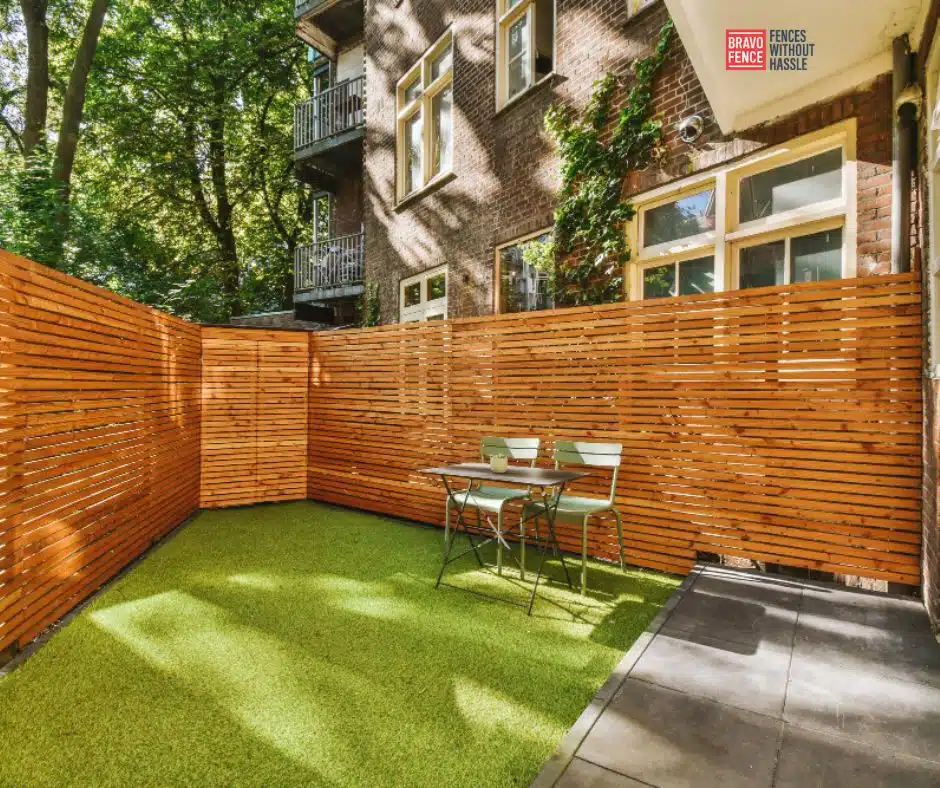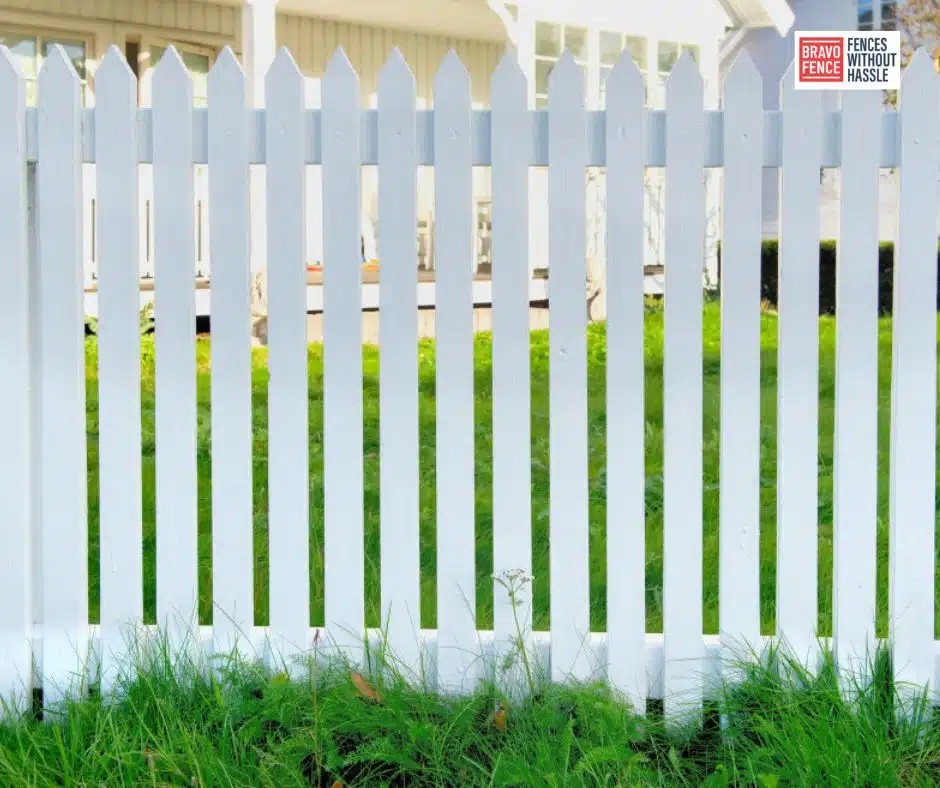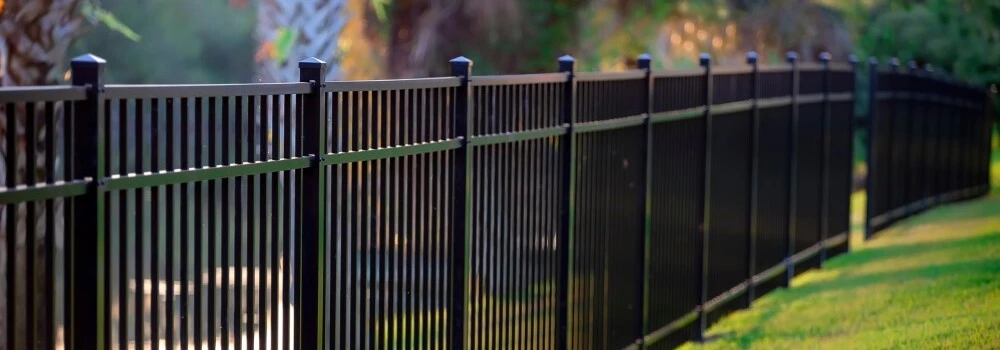
Crafting Your Backyard Barrier: DIY Wood Fence Projects Tips and Ideas
Wood fences not only provide privacy and security but also add charm and character to your backyard.
Crafting your wood fence can be a rewarding DIY project that enhances the aesthetics of your outdoor space while giving you a sense of accomplishment.
Whether you’re a seasoned woodworker or a novice DIY enthusiast, this article offers tips and ideas for building your backyard barrier.
Choosing the Right Wood:

Selecting the correct type of wood is crucial for the longevity and appearance of your fence.
Cedar and redwood are popular choices due to their natural resistance to rot and insects.
Pressure-treated pine is another affordable option that offers durability.
Before making your decision, consider the aesthetic appeal, cost, and maintenance requirements of different wood species.
Design and Planning:
Before diving into construction, take time to plan your fence design.
Determine the height, style, and layout that best suits your needs and complements your landscape.
Traditional picket fences evoke a classic charm, while modern horizontal slat fences provide a sleek, contemporary look.
Sketch out your design and calculate the materials needed to avoid unnecessary expenses and delays.
Gathering Materials and Tools:
Once you’ve finalized your design, gather all the necessary materials and tools for the project.
This typically includes wood boards, fence posts, concrete mix, nails or screws, a level, a saw, a drill, and protective gear such as gloves and safety glasses.
Ensure that you have everything you need before starting to avoid interruptions during the construction process.
Preparing the Site:
Mark the layout, clear vegetation, and check for underground utilities to prepare the site for fence installation.
Use a string line and stakes to establish straight lines and proper alignment for your fence.
Dig post holes at regular intervals, ensuring they are deep enough to provide stability and support for the wall.
Building the Fence:
Begin by installing the fence posts, either by setting them in concrete or using gravel for drainage.
Allow the concrete to cure before attaching the rails and pickets.
Use a level to ensure that the posts and rails are straight and level, adjusting as necessary.
Secure the rails to the posts using nails or screws, then attach the pickets to create the desired pattern.
Adding Finishing Touches:
Once the main structure of the fence is in place, add any finishing touches to enhance its appearance and functionality.
Consider adding decorative elements such as post caps, lattice panels, or arbors to personalize your fence and create visual interest.
Apply a protective finish or stain to the wood to prolong its lifespan and maintain its appearance over time.
Maintenance and Care:
Regular maintenance is essential to keep your wood fence looking its best and ensure its longevity.
Inspect the wall periodically for signs of damage or wear, such as loose boards or rotting wood.
Clean the fence surface as needed to remove dirt, debris, and mildew, and reapply stain or sealant as recommended by the manufacturer to protect the wood from the elements.
Expanding Your Design Options:
While traditional vertical picket fences and horizontal slat fences are popular choices, you can get creative with your design.
Experiment with different patterns, heights, and materials to create a unique and visually appealing fence that reflects your style and complements your landscape.
Consider incorporating elements such as curved lines, alternating board widths, or mixed materials like metal accents for added interest.
Incorporating Functionality:
Beyond aesthetics, think about how you can make your fence more functional to meet your needs better.
Incorporate gates for easy access to your backyard or garden, and consider adding a fence extension for increased privacy or to keep pets and children safely contained.
You could also integrate built-in planters or trellises to add greenery and texture to your fence while maximizing space.
Embracing Sustainability:
When embarking on a DIY wood fence project, consider the environmental impact of your materials and construction methods.
Opt for sustainably sourced wood or reclaimed lumber to reduce your carbon footprint and minimize waste.
Additionally, explore eco-friendly finishes and sealants that are non-toxic and biodegradable to protect both your fence and the surrounding environment.
Seeking Inspiration and Guidance:
If you need help with where to start, seek inspiration from online resources, home improvement magazines, or local garden tours.
You can also join online forums or community groups to connect with fellow DIY enthusiasts and exchange ideas, tips, and advice.
You can also consult with professionals or attend workshops to gain valuable insights and guidance for your project.
Celebrating Your Achievement:
Building your wood fence is not only a practical endeavor but also a creative expression of your skills and vision.
Take pride in your achievement and celebrate the completion of your project by hosting a backyard gathering or inviting friends and family to admire your handiwork.
Your custom wood fence is not just a barrier—it’s a testament to your craftsmanship and the heart and soul you’ve invested in making your backyard a more beautiful and inviting space.
Conclusion
Crafting your wood fence is a rewarding DIY project that allows you to create a personalized backyard barrier that enhances the beauty and functionality of your outdoor space.
By following these tips and ideas, you can successfully plan, build, and maintain a wood fence that adds value and charm to your home for years to come.
So roll up your sleeves, grab your tools, and get ready to transform your backyard with a custom wood fence of your creation.
Ready to start your project?
Contact us at Bravo Fence Company for expert assistance and guidance.
FAQs
What are the benefits of building a wood fence in my backyard?
Wood fences offer privacy, security, and aesthetic appeal to your outdoor space. They can enhance the charm and character of your backyard while providing a sense of accomplishment through DIY construction.
How do I choose the right type of wood for my fence?
Consider factors such as durability, appearance, cost, and maintenance requirements when selecting wood. Popular options include cedar, redwood, and pressure-treated pine for their resistance to rot and insects.
What should I consider during the design and planning phase?
Take time to plan your fence’s height, style, and layout to suit your needs and landscape. Sketch out your design and calculate material requirements to avoid unnecessary expenses and delays.
What materials and tools do I need for building a wood fence?
You’ll need wood boards, fence posts, concrete mix, nails or screws, a level, a saw, a drill, and protective gear such as gloves and safety glasses. Ensure you have everything before starting construction.
How do I prepare the site for fence installation?
Mark the layout, clear vegetation, and check for underground utilities. Use a string line and stakes for proper alignment, and dig post holes at regular intervals with adequate depth for stability.
What steps are involved in building the fence?
Begin by installing fence posts, then attach rails and pickets while ensuring straightness and levelness. Secure all components with nails or screws according to your design.
How can I add finishing touches to my wood fence?
Consider decorative elements like post caps, lattice panels, or arbors to personalize your fence. Apply a protective finish or stain to prolong its lifespan and maintain its appearance.
What maintenance is required for a wood fence?
Regularly inspect for damage or wear, clean as needed, and reapply stain or sealant as recommended. This helps preserve the fence’s appearance and longevity.
How can I expand my design options beyond traditional styles?
Experiment with patterns, heights, and materials to create a unique fence that reflects your style. For added versatility, incorporate functional elements like gates or built-in planters.
What steps can I take to make my wood fence project more sustainable?
Opt for sustainably sourced or reclaimed wood and eco-friendly finishes to minimize environmental impact. Consider the lifecycle of materials and construction methods used.
Where can I find inspiration and guidance for my wood fence project?
Explore online resources, home improvement magazines, and local garden tours for ideas. Join online forums or community groups to connect with DIY enthusiasts and seek professional advice if needed.
How can I celebrate the completion of my wood fence project?
Host a backyard gathering or invite friends and family to admire your handiwork. Take pride in your achievement, which is a testament to your craftsmanship and vision.
Can I install a wood fence by myself, or do I need professional help?
While DIY installation is possible, consider your skill level and the complexity of the project. Simple designs may be manageable for beginners, but more intricate or large-scale fences might benefit from professional expertise.
How do I ensure the longevity of my wood fence in different weather conditions?
Choose weather-resistant wood and apply a protective finish to guard against moisture, UV rays, and other environmental factors. Regular maintenance, such as sealing cracks and replacing damaged boards, can also extend the fence’s lifespan.
Are there any regulations or permits I need to consider before building a wood fence?
Check local building codes and zoning regulations regarding fence height, setback requirements, and property lines. Obtain any necessary permits before starting construction to avoid potential fines or legal issues.
Tags: Complete Guide to Diy Wood Fence Ideas, Complete Guide to Diy Wood Fence Ideas For Privacy, Complete Guide to Easy Diy Wood Fence Tips, Complete Guide to Simple Diy Wood Fence Ideas, Complete Guide to Wood Fence Materials List, Everything You Need to Know About Diy Wood Fence Ideas For Front Yard

